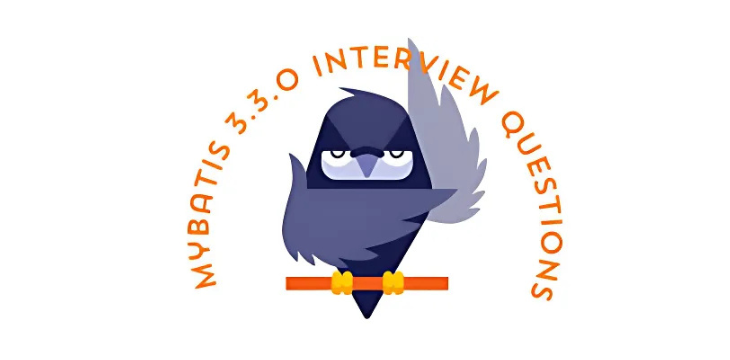So, you’ve landed an interview for a position that involves mybatis 3.3.0 interview questions? Exciting stuff! But you’re probably wondering what kind of questions might pop up. Well, you’re in the right place! MyBatis is a popular Java-based persistence framework that simplifies database access. It’s like a bridge between your Java applications and SQL databases, making life a whole lot easier for developers.
In this article, we’ll explore a treasure trove of MyBatis 3.3.0 interview questions, ranging from the basics to some trickier ones. You’ll be armed with the knowledge you need to impress your interviewers and walk away feeling like a rock star. So, grab your favorite cup of coffee, settle in, and let’s get cracking!
What is mybatis 3.3.0 interview questions?
- MyBatis Defined: MyBatis is an open-source framework that helps you manage relational data in Java applications. It’s known for its simplicity and flexibility, allowing you to focus on writing SQL rather than dealing with complex ORM (Object-Relational Mapping) frameworks.
- How It Works: MyBatis maps Java objects to database records using XML or annotations. This means you can write SQL directly in your application while keeping your code clean and manageable.
Key Features of mybatis 3.3.0 interview questions
- SQL Mapping: Easy-to-understand SQL mapping for database operations.
- Flexible Configuration: Use XML or annotations to configure your mappings.
- Dynamic SQL Support: Build dynamic SQL queries with ease using if-else statements.
- Transaction Management: MyBatis integrates seamlessly with Spring for transaction management.
Now that we’ve set the stage, let’s jump into the good stuff—those MyBatis 3.3.0 interview questions!
Essential MyBatis 3.3.0 Interview Questions
Basic Questions
- What is the purpose of MyBatis?
- MyBatis is designed to simplify the interaction between Java applications and relational databases, allowing developers to focus on writing SQL.
- Can you explain the role of the SqlSession in MyBatis?
- The SqlSession is the main interface for interacting with MyBatis. It provides methods to execute SQL statements, manage transactions, and get mapped statements.
- What are the key components of MyBatis?
- The key components include:
- SqlSessionFactory: Creates SqlSession instances.
- SqlSession: Interface for executing SQL commands.
- Mapper Interface: Defines the methods for executing SQL statements.
- The key components include:
- How do you configure MyBatis in a Java application?
- Configuration typically involves creating a
SqlSessionFactoryfrom an XML configuration file or using Java configuration classes. You’ll specify database connection properties and mapper locations.
- Configuration typically involves creating a
Intermediate Questions
- What are the differences between mybatis 3.3.0 interview questions and Hibernate?
- MyBatis:
- Focuses on SQL and manual mapping.
- Provides more control over SQL statements.
- Hibernate:
- Uses ORM for object mapping.
- Abstracts SQL away, managing entities and relationships automatically.
- MyBatis:
- What is a Mapper in MyBatis?
- A Mapper is an interface that defines methods for executing SQL statements. MyBatis generates implementations for these methods at runtime, which makes it easy to call SQL operations directly.
- How do you handle dynamic SQL in MyBatis?
- You can handle dynamic SQL using
<if>,<choose>,<when>, and<otherwise>tags in the XML mapping files, allowing you to construct SQL statements based on certain conditions.
- You can handle dynamic SQL using
Advanced Questions
- What is the purpose of the @Mapper annotation?
- The @Mapper annotation is used to indicate that an interface is a Mapper, enabling MyBatis to detect it during component scanning. This annotation simplifies configuration and removes the need for XML mappings.
- Can you explain the caching mechanism in MyBatis?
- MyBatis supports two levels of caching:
- First-Level Cache: A session-specific cache that stores data for the duration of a session.
- Second-Level Cache: A shared cache that can be configured to store data across sessions, improving performance by reducing database hits.
- MyBatis supports two levels of caching:
- How can you handle transactions in MyBatis?
- You can manage transactions using the
SqlSessioninterface. By default, MyBatis operates in auto-commit mode, but you can control transaction boundaries usingSqlSession.commit()andSqlSession.rollback().
- You can manage transactions using the
Problem-Solving Questions
- How would you troubleshoot a MyBatis query that’s returning no results?
- First, check the SQL statement in the mapper to ensure it’s correct. Then, verify that the parameters passed to the query are valid. Logging the executed SQL and parameters can help identify issues.
- What’s the best way to optimize MyBatis performance?
- Optimize performance by:
- Using caching effectively.
- Minimizing database round trips by batching operations.
- Leveraging lazy loading for large objects.
- Optimize performance by:
FAQs about MyBatis 3.3.0 Interview Questions
Q1: What should I focus on when preparing for MyBatis interview questions?
A: Focus on understanding the core concepts of MyBatis, including its architecture, configuration, and SQL mapping. Be prepared to discuss real-world scenarios and how you’ve applied MyBatis in your projects.
Q2: Are there any common pitfalls to avoid when using MyBatis?
A: Yes! Some common pitfalls include:
- Overusing XML for configuration when annotations can simplify the code.
- Ignoring caching options, which can lead to performance issues.
- Not validating SQL queries before execution.
Q3: How can I practice MyBatis skills before an interview?
A: Here are some tips to practice:
- Build a small project using MyBatis to get hands-on experience.
- Solve problems on platforms like LeetCode or HackerRank that involve SQL.
- Read the MyBatis documentation and experiment with different features.
Conclusion
There you have it! A comprehensive guide filled with MyBatis 3.3.0 interview questions that’ll set you on the path to success. Remember, interviews can be nerve-wracking, but with the right preparation, you can walk in with confidence.

